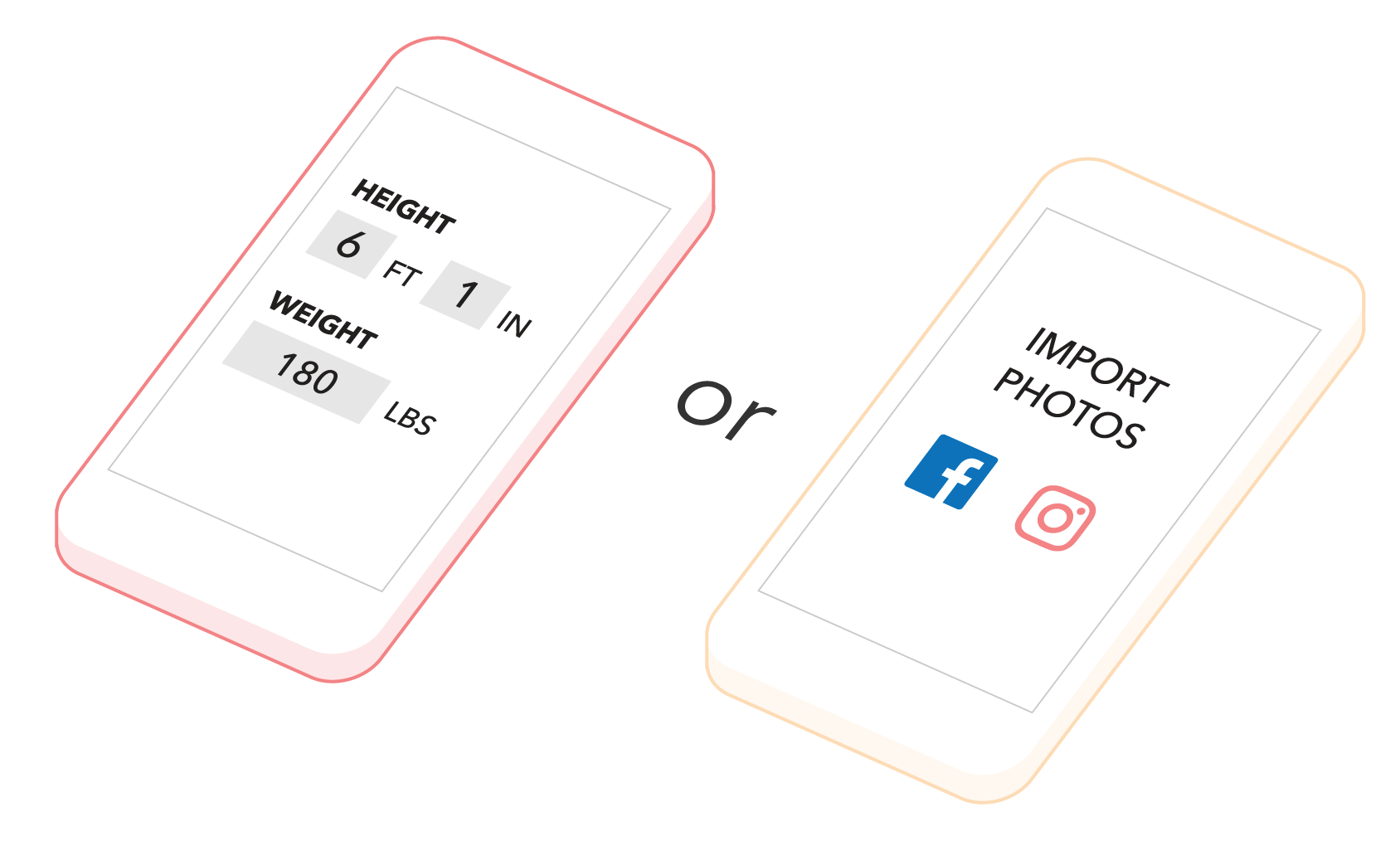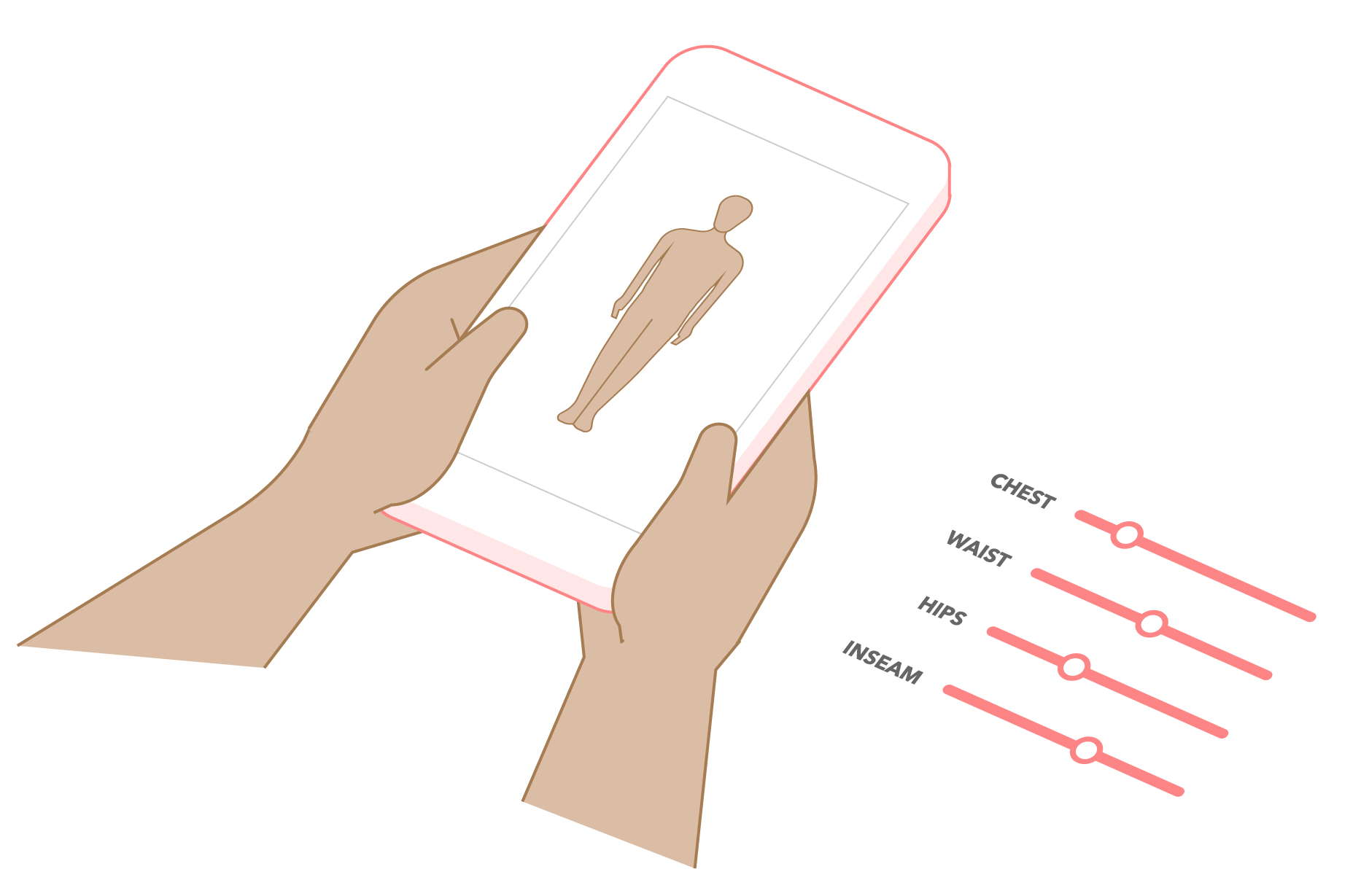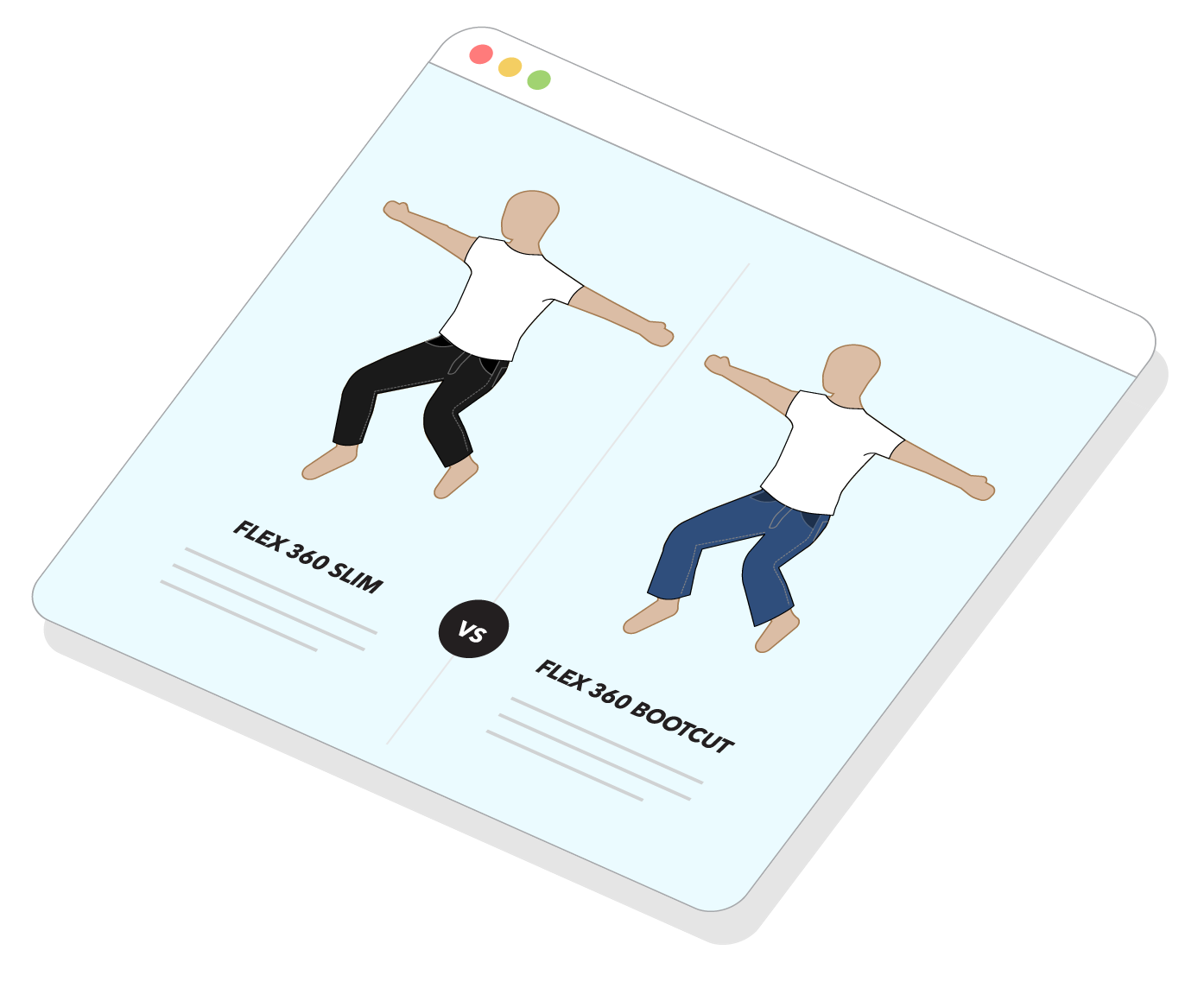When logging in for the first time, the user inputs his/her body measurements to form a virtual model. User can also import photos if he/she is not sure about an exact measurement.

After the virtual model is created from measurements, the user can make small adjustments to the miniquin with a slider and direct interactions.

A 3D mannequin is generated based on user’s input. It can virtually try on clothing items and move around to convey the texture, weight, and stretchiness.

Using machine learning algorithm, the systThe user can easily compare different styles with the 3D mannequin.

The input interaction methods should be as easy and convenient as possible.
The mannequin should be automatically generated into an accurate representation of the user’s body to build trust with shoppers.
Shoppers like the models to represent them, but seeing their own faces on the models makes them feel uncomfortable.
Showing animation and movement of daily activity helps shoppers understand how clothes will move with them.

Provide measurements as input to create the mannequin.
Use a wearable measuring tool, such as smart leggings, to create the mannequin.
Mirrors with camera body scanning create the mannequin.